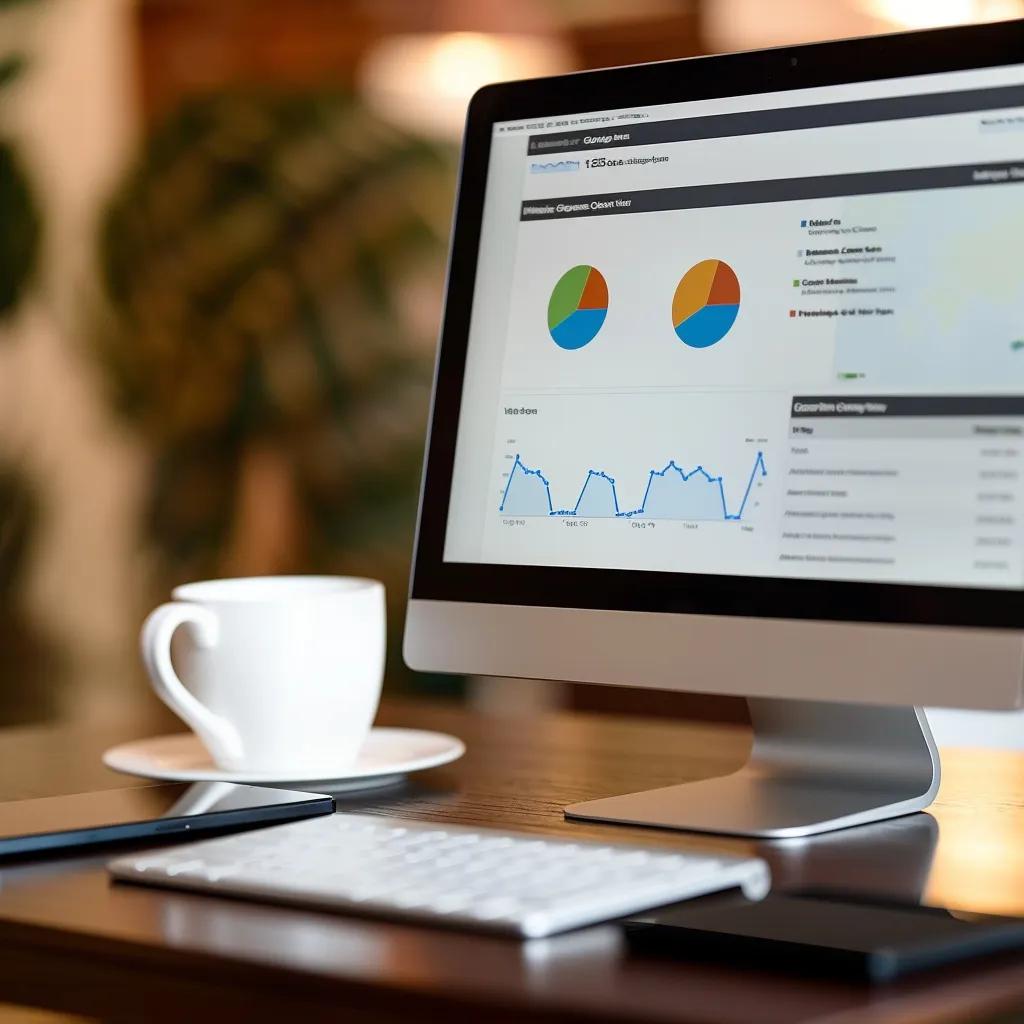How Much Should I Expect To Pay For A Professional Website Design Service: Understanding Website Design Costs and Your Investment
Determining how much you should expect to pay for a professional website design service is crucial for aligning your budget with business goals, avoiding unexpected expenses, and unlocking measurable digital growth. Many small and mid-sized companies find that transparent cost breakdowns, from initial design through ongoing support, guide better investment decisions. In this article, you will discover:
- The core components that drive website design costs
- Key factors influencing total investment, including customization and complexity
- Typical price ranges for small business and e-commerce sites
- Recurring expenses after launch, such as maintenance, hosting, and marketing
- Comparison of pricing models: hourly, project-based, and packaged solutions
- Strategies to maximize ROI through strategic partner selection and timely redesigns
- Answers to the most common questions about website design budgets
This comprehensive guide empowers you to plan a website design investment that delivers professional quality, long-term value, and measurable growth.
What Are the Core Components of Professional Website Design Costs?
Professional website design costs encompass multiple services and deliverables that combine to create a functional, brand-aligned online presence. At a high level, initial design, custom development, content creation, and project management form the foundation of your investment, ensuring a seamless user experience and scalable architecture.
What Is Included in Initial Website Design Pricing?
Initial website design pricing typically covers concept development, visual mockups, responsive layouts, and a content management system setup. This phase defines your site’s look, feel, and structure before development begins.
- Concept & UX Planning: Strategic wireframes and user journey mapping
- Visual Design: Custom UI mockups tailored to brand identity
- Responsive Templates: Cross-device styling for mobile, tablet, and desktop
- CMS Installation: Setup of platforms like WordPress, Drupal, or Webflow
- Basic SEO Setup: Meta tags, URL structures, and performance optimization
These deliverables establish the project scope and prepare the technical environment, laying the groundwork for further feature integration.
How Do Features and Functionality Affect Website Cost?
Features and functionality extend beyond basic design to include interactive elements, integrations, and custom modules. Each additional feature increases development complexity, resource requirements, and testing overhead.
| Entity | Attribute | Value or Impact |
|---|---|---|
| Contact Forms | Development Time | 4–8 hours |
| E-commerce Checkout | Payment Gateway Integration | $500–$1,500 depending on platform |
| User Authentication | Security & Sessions | $700–$1,200 |
| CRM & API Integrations | Custom Data Flows | $1,000–$3,000 |
| Advanced Animations | Front-End Scripting | $800–$2,500 |
Complex components require rigorous quality assurance and often specialized expertise, directly influencing the overall project cost.
What Are Typical Price Ranges for Small Business Websites?
Small business websites vary widely based on design sophistication and functionality. Below is a general investment tier for common small business site types.
| Entity | Attribute | Investment Range |
|---|---|---|
| Basic Brochure | 5–10 pages | $3,000–$7,000 |
| Standard Business | 10–20 pages | $7,000–$12,000 |
| Premium Branding | Custom UI & Animations | $12,000–$20,000 |
Smaller budgets often align with template customization, while higher tiers reflect fully bespoke design, advanced integrations, and thorough stakeholder collaboration.
How Do E-commerce Website Costs Differ from Standard Sites?
E-commerce Website Costs
E-commerce websites have higher costs than standard sites due to the need for catalog management, secure transactions, and inventory tracking. The investment range for e-commerce sites varies widely, from $10,000 to $250,000+, depending on the size of the store and the complexity of the features.
“How Much Does it Cost to Build an E-commerce Website?” Shopify (2024)
This citation supports the article’s claims about the cost differences between standard and e-commerce websites, specifically addressing the factors that drive up the cost of e-commerce sites.
| Entity | Attribute | Investment Range |
|---|---|---|
| Small Storefront | 50 products, basic theme | $10,000–$20,000 |
| Mid-Size Catalog | 200–500 products, custom | $20,000–$50,000 |
| Enterprise E-commerce | 1,000+ products, complex | $50,000–$250,000+ |
Which Factors Influence the Total Investment in Website Design?

Website Design Cost Factors
The cost of website design is influenced by various factors, including the level of customization, the type of website, and the experience of the design agency. Customization, in particular, can significantly impact pricing, with bespoke designs costing more than template-based approaches. The type of website, whether informational, portfolio-based, or a membership platform, also dictates the complexity and cost of development.
“How Much Does Website DesignCost?” WebFX(2024)
This source provides insights into the factors that influence website design costs, which aligns with the article’s discussion of customization levels, website types, and agency experience.
How Does Customization Level Impact Website Pricing?
- Bespoke Design: Unique layouts, tailored animations, extensive user testing
- Hybrid Models: Template base with custom brand elements
- Template-Only: Off-the-shelf design with minor brand adjustments
What Role Does Website Type Play in Cost Variations?
- Informational Sites: Primarily content publishing, lower complexity
- Portfolio Sites: Visual emphasis, moderate gallery integrations
- Membership Platforms: User registration, gated content, recurring billing
How Do Agency Experience and Location Affect Pricing?
- Boutique Local Agencies: $75–$125/hour in mid-cost regions
- National Digital Firms: $100–$200/hour with specialized teams
- Freelancers: $30–$80/hour based on portfolio and niche expertise
How Does Website Complexity Influence Your Investment?
- Small Scope: Under 10 pages, minimal integrations
- Medium Scope: 10–50 pages, multiple APIs, moderate interactivity
- Large Scope: 50+ pages, complex workflows, advanced data handling
What Are the Ongoing Costs After Website Launch?

How Much Does Website Maintenance Typically Cost?
| Entity | Attribute | Typical Annual Cost |
|---|---|---|
| Core Updates | CMS & Plugins | $500–$1,200 |
| Security Monitoring | Malware Scans | $300–$800 |
| Content Edits | Minor Revisions | $50–$150 per hour |
| Backup Services | Off-site Storage | $100–$300 |
What Are the Different Web Hosting Options and Their Costs?
- Shared Hosting: $2–$15/month, limited resources
- VPS & Cloud Hosting: $20–$100/month, scalable environments
- Dedicated Servers: $80–$500+/month, high performance and control
How Do SEO and Digital Marketing Expenses Affect Your Budget?
- SEO Retainers: $500–$3,000+/month for on-page, technical, and link building
- PPC Campaigns: $1,000+ monthly spend plus management fees
- Content Marketing: $100–$300+ per blog post, plus strategy fees
What Other Recurring Fees Should Small Businesses Expect?
- SSL Certificates: $0–$200/year depending on validation level
- Premium Plugins & Themes: $50–$300/year per item
- Support Contracts: $1,200–$5,000+/year for guaranteed response times
How Do Different Web Design Pricing Models Compare?
What Are the Pros and Cons of Hourly vs. Project-Based Pricing?
- Hourly: Flexible scope, transparent time tracking, potential budget overruns
- Project-Based: Predictable costs, defined deliverables, scope change fees
How Do Freelance Web Designers’ Rates Compare to Agencies?
| Entity | Attribute | Hourly Rate |
|---|---|---|
| Freelancers | Independent | $30–$80 |
| Boutique Agencies | Small Teams | $75–$125 |
| Full-Service Firms | Multidisciplinary | $100–$200+ |
What Are Typical Website Design Packages and What Do They Include?
- Starter Package: Basic design, CMS setup, 5–10 pages
- Growth Package: Custom design elements, SEO basics, 10–20 pages
- Enterprise Package: E-commerce integration, advanced features, ongoing support
Professional Website Design Costs: How Much Should You Budget?
How Does a Professional Website Drive Digital Growth and Leads?
- Improved User Experience: Streamlined pathways guide visitors to key actions
- SEO Foundations: Responsive design and fast load times enhance search rankings
- Brand Authority: Consistent visuals and messaging reinforce credibility
What Should You Look for When Choosing a Web Design Partner?
- Process Transparency: Clear milestones, deliverable outlines, and feedback cycles
- Portfolio & Testimonials: Demonstrated success in your industry or project type
- Strategic Insight: Ability to align design decisions with business objectives
When Is It Time to Invest in a Website Redesign and What Does It Cost?
| Entity | Attribute | Typical Redesign Cost |
|---|---|---|
| Minor Refresh | Visual Updates | $3,000–$7,000 |
| Mid-Level Redesign | Feature Enhancements | $7,000–$25,000 |
| Full Rebuild | New Architecture | $25,000–$75,000+ |
What Are the Most Common Questions About Website Design Costs?
How Much Does a Small Business Website Cost on Average?
A basic small business website typically costs between $3,000 and $12,000, depending on page count, design complexity, and required features.
What Factors Most Affect Custom Website Pricing?
Customization level, functionality requirements, number of integrations, and content volume are the primary cost drivers.
How Much Should You Budget for Website Maintenance Annually?
Annual maintenance expenses generally range from $1,000 to $5,000, covering updates, security monitoring, backups, and minor revisions.
How Do E-commerce Website Costs Vary by Complexity?
Simple e-commerce stores with under 100 products often start at $10,000, while enterprise-level platforms can exceed $100,000 based on custom workflows and integrations.
What Are the Benefits of Investing in Professional Website Design?
Professional design enhances brand trust, supports scalable growth, optimizes user engagement, and lays a solid SEO foundation for long-term visibility.
A well-structured, professionally designed website aligns with your brand story and drives measurable growth by converting visitors into customers. By breaking down costs into core components and understanding influencing factors—from features to pricing models—you gain clarity to allocate budgets effectively. Ongoing expenses for maintenance, hosting, and marketing ensure your site remains secure, performant, and optimized for search. Finally, selecting the right partner and timing redesigns amplifies your return on investment, positioning your business for sustained digital success.


